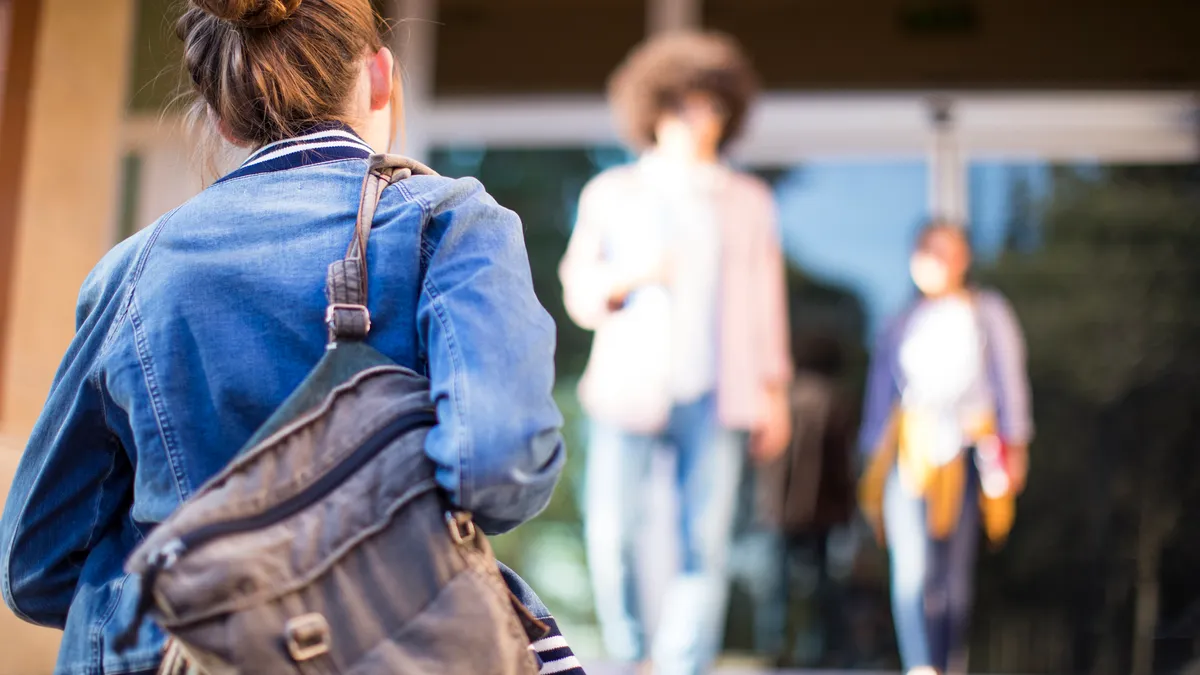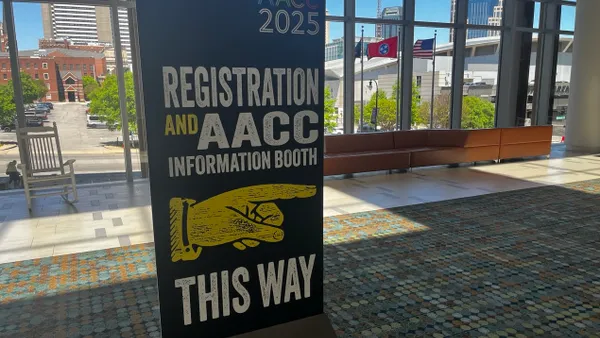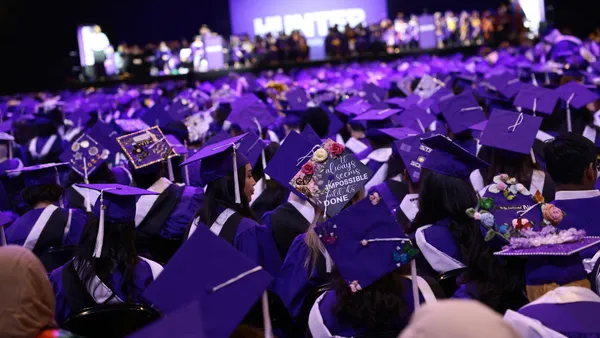Dive Brief:
- The persistence rate among first-year college students has returned to pre-pandemic levels, according to a new report from the National Student Clearinghouse Research Center.
- Of first-year students who enrolled in fall 2021, 75.7% returned to college by the following year. That's the same average persistence rate seen among the 2016, 2017 and 2018 freshman classes.
- Community colleges, public four-year institutions and private nonprofit colleges all increased their persistence and retention rates between fall 2021 and fall 2022. But four-year for-profit colleges and those that primarily grant associate degrees saw declines.
Dive Insight:
The persistence rate refers to students who return to college in their second year, regardless of which institution they attend. Retention refers to the share of students who come back to the same institution.
The increased persistence rate was driven by a larger share of second-year students returning to their starting institution, according to the report.
Just over two-thirds of students who entered college in fall 2021, 67.2%, returned to or earned a credential at the institution they started at within a year of enrollment. That's up from 66.4% the previous year and half a percentage point higher than the pre-pandemic average.
Retention rates nationwide rose regardless of whether students attended full time or part time.
However, persistence rates didn’t see the same across-board increases. They remained largely unchanged for part-time students, while they increased for full-time students, the report said.
But at for-profit and public four-year institutions, lower percentages of part-time students returned and stayed compared to the year before.
Public two-year colleges experienced increases in full-time and part-time persistence, the only institution type to do so. This report marks the second year in a row that community colleges saw such improvements.
Their success could be, in part, due to the kinds of programs they offer. Short-term credentials in skilled trades such as construction, mechanic and repair technologies, and culinary services saw more students persisting, the report said.
Computer science programs saw significant increases in enrollment, and students persisted and stayed at their institutions at greater levels than the year prior. Healthcare programs saw similar retention and persistence results.
Researchers also found improved persistence and retention rates among younger first-time college students. On both metrics, those aged 20 or younger saw increases of 1.4 percentage points.
But those over the age of 25 — nontraditional students who face additional challenges to degree completion — saw large declines to both persistence and retention, regardless of sector.
Stubborn racial and ethnicity gaps continued to appear when researchers disaggregated the data.
Asian students who entered college in fall 2021 persisted at a rate of 88.4%, the highest rate tracked by the clearinghouse. In contrast, persistence among Native American students was the lowest of any racial and ethnic group, 62.1%.
But that number represents an improvement following dramatic decreases last year. Among Native American freshmen in fall 2020, the persistence rate fell to 60.1%, dropping 2.8 percentage points from the prior year.
Another bright spot was persistence and retention among Latinx students. Both rates improved for Latinx freshmen in the fall 2021 cohort at most institution types. The only exception was baccalaureate colleges that primarily grant associate degrees.













